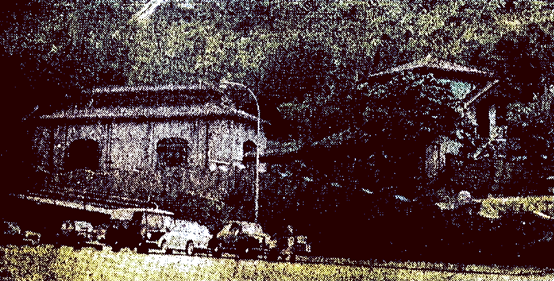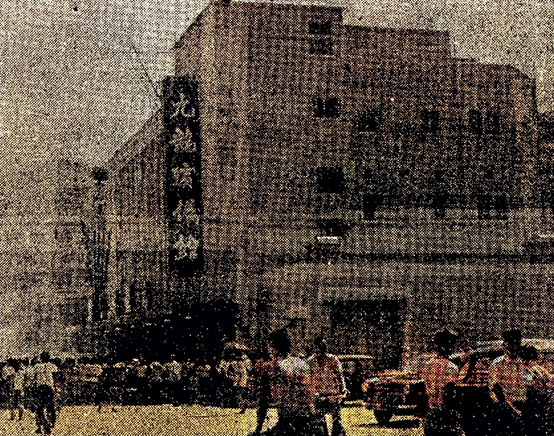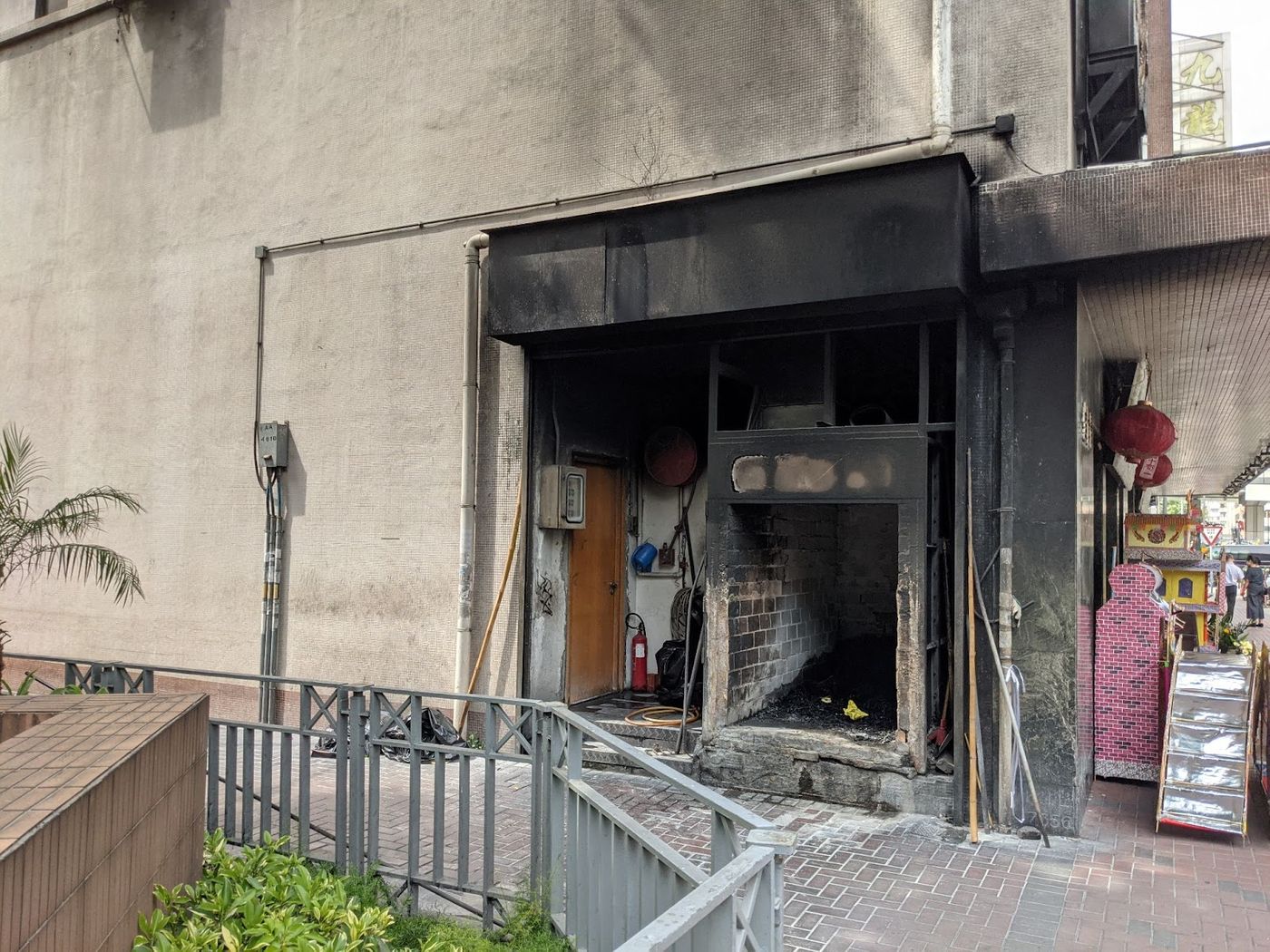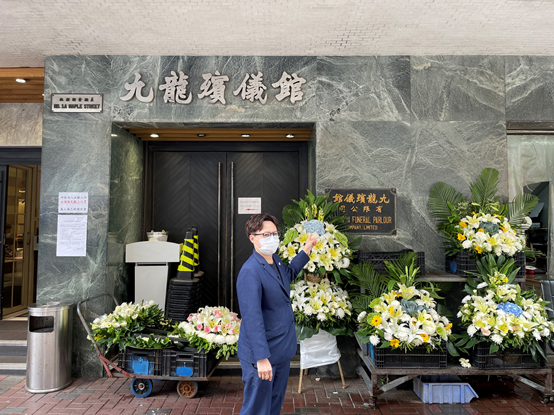
<角醒>是由大角咀街坊自發成立的社區報,由2020年起,每2個月發行一次。在大時代洪流下,我們選擇從小處出發,在角落處點一盞燈。 如果你有興趣加入製作團體,請填妥以下資料,我們將於稍後聯絡你: https://forms.gle/Cp78YdYSs71bn4zu6 如果你是大角咀商戶,歡迎加入成為派發點: https://forms.gle/ZWCmSUYqwhEYiPR19
The past and present of No.1A
Since the British government leased the New Territories in 1889, the population of the Kowloon Peninsula has grown rapidly. The government has built a number of funeral facilities in the Yau Ma Tei area to meet the increasing demand for burials. Although Yau Ma Tei was still the core area for burials in Kowloon until the early post-war period, the supply of funeral facilities in Kowloon was in short supply. The first funeral parlour in Hong Kong opened in Wanchai in the 1930s, and there has been no funeral parlour in Kowloon.

In order to meet the urgent needs of the residents of Kowloon, the Urban Council started to bid for a site for the construction of a funeral parlour at the end of 1957, and the organization headed by Xiao Ming finally won the bid. The Kowloon Funeral Home was officially opened on May 21, 1959, which was convenient for many residents. Based on its modern design and willingness to provide coffins to help the poor, the residents responded well and accepted that the funeral home was located in the district.
According to news materials, thousands of people celebrated on the opening day, Chinese and Western bands played in turn, and the flowers were piled up like a mountain. It was also described that the funeral home was beautiful, well-designed, and innovative in equipment and management.


A new funeral home in a mixed industrial-residential area
In order to know more about the views of the Tai Kok Tsui neighborhood on the funeral parlour at that time, this newspaper interviewed Mr. Fang Qibo, who relocated his former residence and clothing paper shop "Po Yuen" to Tai Kok Tsui in the early 1960s. Talking about the Kowloon Funeral Home, Mr. Fang said that before the shop moved to Tai Kok Tsui, his father had been there for a funeral, because the Kowloon Funeral Home is the only funeral home in Kowloon, and the arrangements were more thoughtful, and there was enough space for relatives to keep vigils and pay their respects. ceremony.
Mr. Fong continued to point out that since the 1950s, Tai Kok Tsui has been known as the "cradle of industry", giving birth to many giant industrial crocodiles. Before the funeral home was completed, there were already a number of dock oil depots, a series of hardware stores, and cottage factories. Of course, there were also numerous “Minsheng Small Stores” that responded to the needs of the neighborhood like Baoyuan.
In fact, the Tai Kok Tsui neighborhood had already accepted the existence of the funeral home. Students who took classes in the factory area would be dismissed at 1:00 pm summer time. Grab a light meal, and even take the opportunity to walk into the funeral home to enjoy free air-conditioning. The staff are also very friendly to the students who are sitting quietly by the side, and they will let them "sigh".
Mr. Fang pointed out that "people will always die", and funeral homes are just facilities to serve the needs of the public. For Mr. Fang, who sells incense candles and stationery, it is also a business object. When the employees of the funeral home came to pick up the goods, they would record it on the record, and then every other day, Mr. Fang would go to the funeral home to collect fees once.
The transformation of Tai Kok Tsui - the contradiction between funeral home and community
Afterwards, the shipbuilding and repairing industry in Hong Kong declined. The Tai Kok Tsui Dockyard and Oil Depot closed in the 1970s, and the manufacturing industry was not as prosperous as it was then. Most of the factories moved northward in the 1980s.
The government announced the "Rose Garden Project" in 1989 to start the West Kowloon reclamation project. With the opening of the Olympic Station in 1998 and the completion of Bank of China and HSBC Center, Dajiaozui, which was originally a mix of industry and residence, has transformed into a mixed commercial and residential community.
Different from the time when the funeral home was first built, today's Dajiaozui is completely different from the industrial powerhouse of the past, both in terms of population and geographical features. The funeral home that was "glossy" back then may have become an "out of place" building today. In the online forums in the early years, it can be seen that some netizens think that funeral homes are not in line with the current environmental sanitation and are detrimental to the appearance of the city.

Once a bull in the Far East, it is now in a dilemma
District councillors have proposed the relocation of the funeral home as early as 2009. Although the matter has not yet been implemented, the Kowloon Funeral Home changed the furnace to an environmentally friendly furnace in 2010 after receiving comments from the neighbors, in order to reduce the problem of air ash. It can be seen that Funeral homes have tried to cooperate.
In the Yau Tsim Mong District Council Food and Environmental Hygiene Committee in 2013, the District Councillor mentioned that the ash problem had improved, but still pointed out that "with the current development, it is really out of date for the residents to coexist with the Kowloon Funeral Parlour, which has been in operation for more than 50 years. Time-limiting land for funeral purposes also hinders the long-term development of the district.”
On the other hand, Hung Hom, as the rumored relocation location of the Kowloon Funeral Home, also has many objections. There are already a large number of funeral facilities in the Hung Hom area. Regarding the rumors of the Kowloon Funeral Parlour moving in, the neighbors worried that Hung Hom would become a "funeral paradise", causing a lot of uproar. Due to the "nemesis mentality", even if the Kowloon Funeral Home is relocated, no matter where the destination is, it will be caught in a "dilemma".
This newspaper interviewed Ms. He Jian (Angel), the sales manager of Kowloon Funeral Home. She pointed out that she has not received any news about the relocation of Hung Hom. But when asked about her personal wishes, she said that moving to Hung Hom might be more inconvenient, because she is used to serving in Dajiaozui and considers herself a "Dajiaozui neighborhood".
| Ms Ho Kin's interview will be held at Kok Tawakening - Tai Kok Tsui Community News @TKTawakening Facebook page.

Transform with Tai Kok Tsui
Angel has been working in a funeral home for 13 years. She admits that she has stayed in Dajiaozui much longer than her residential area. She usually eats meals or goes out to relax. She also notices that there are more young people in recent years. , more mansions, and more small shops, the whole district is much more dynamic.
After the funeral parlor, the area around Betfair Road, Yangsong Street, and Fukquan Street can still be seen today. The factory buildings that used to be responsible for manufacturing can still be seen today. Although the ground floor is still old shops such as hardware shops and garages, there are still more young people renting and renovating them. The upstairs unit is used for hair salon, studio, band room and so on.
Earlier, we collected everyone's questions about the funeral home on social platforms. Some neighbors asked whether the funeral home was considering decoration to improve the gloomy environment. In fact, in addition to the above-mentioned environmentally friendly furnaces, the Kowloon Funeral Home started a renovation project in 2008.
A number of new modern equipments have been added to the project, among which, it is believed that the entire third floor of the museum is changed to a silent floor to provide a quiet place to hold memorial ceremonies. To this day, the church at Kowloon Funeral Home is still the only church in Hong Kong dedicated to funerals. It is believed that these renovations are to meet the needs of the society for funerals in recent years.
Beauty needs to be discovered
People usually pass by the funeral home, or they just walk by in a hurry. Even if you look back a little, looking at the weathered outer wall, you may only think that it is an old building, but in fact it is not as dilapidated as imagined. The decoration, neat partitions, stained glass, and the church of the bones can all see the timeless side.
Speaking of the driving force behind Angel’s work—the neighbors greeted her proactively, and the snacks they gave her because they were worried that they would starve after working all night… These concerns were enough to make her feel that she really existed in this community, and she even met some neighbors. His parents and even grandparents were buried at the Kowloon Funeral Home. These are the fates forged with the community over the years.
The Kowloon Funeral Home on Maple Street is like an old tree rooted in the community of Dajiaozui. Everyone likes to sit still and admire the changing maple leaves with the seasons. Would you like to stop and watch the fleeting changes around you today?
Reporters: Pumpkin, Fred | Photography: Belle
Like my work?
Don't forget to support or like, so I know you are with me..
Comment…